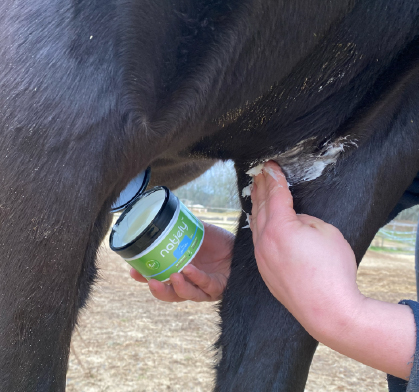Chasing away a common, harmless species with insecticides, chemical products or massive disinfection of the habitat frees up living space for more resistant and therefore more aggressive species. It's with this in mind that you need to think about insect management in your horse's living environment. This protocol will not only cover possible protective measures, but will also give you a few keys to managing your horse's environment.
Waging war on manure
Insects are attracted to damp areas such as puddles and ponds, but especially to manure, dung (including in meadows), mud and soiled areas (including stalls). So all these living areas need to be cleaned daily (and without pesticides).
Consider stall tiles, which are more economical in the long run.
Cover up mud and puddles and, above all, keep your manure as far away as possible or, at worst, place it in a VERY well-ventilated area.

Let insects help you!
Insects love virgin territory. Eradicating one species brings in a new, more resistant one. We must therefore accept the presence of insects that are virtually harmless to our horses (such as large green flies, spiders or bees), as they will act as a barrier against others.
It is therefore imperative to eliminate insecticides and other chemical cleaning products, because while they destroy "pests", they also keep "good" insects away.

ATTRACT BIRDS (AND BUTTERFLIES)
It's a well-known fact that birds eat insects. But their presence is also enough to deter certain insect colonies. So help them take over. Feeders, perches, swallow nests under roofs, watering holes, hedges, fruit trees.... The Internet is full of good ideas, so make the most of them.
On the meadow side, many plants are known to be repellent. They will also help to recreate biodiversity and thus attract birds. So it's a shame to go without. Be sure to choose simple plants (lavender, savory, etc.) that are not dangerous to horses. Flowers also attract bees and butterflies, so keep that in mind.


Using NATJELY as an insect protector provides protection without disturbing the ecosystem. Apply it to insect target areas (neck, pastern for ticks; ears, belly and head for mosquitoes and flies) 2 or 3 times a week.
For more provocative flying insects, applying DERFLY every 2 days to the target areas with a glove offers natural protection and temporarily masks the horse's smell, reducing its attractiveness to biting insects.
DERFLY is also particularly effective on the upper mane and tail of horses with a tendency to dermatitis, to repel culicoides.
Finally, mixing the 2 (DERFLY/NATJELY) gives a "home-made" product combining all the benefits of each, particularly on areas with very short hair.
Equipment side
Head and forehead masks are very useful tools against insects. However, not all horses can stand masks, especially if the environment is very dusty.
Anti-insect blankets can be very useful, but be sure to wash them often, as perspiration can lead to macerations, causing bacterial infections that can scratch or strip the skin.
As for anti-dermatitis blankets, if the dermatitis is really summer dermatitis and not dietary dermatitis, they can be very useful, provided you keep the blanket very clean. If, on the other hand, you find it regularly torn, the problem is "underneath" and not due to insects.

 ANIMADERM S.A.S
ANIMADERM S.A.S

